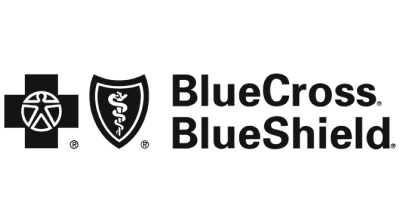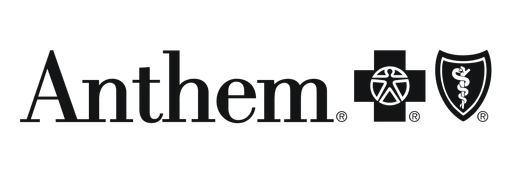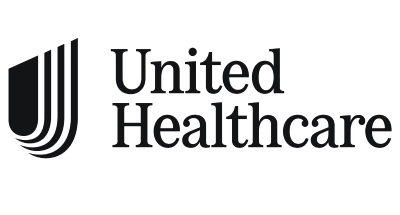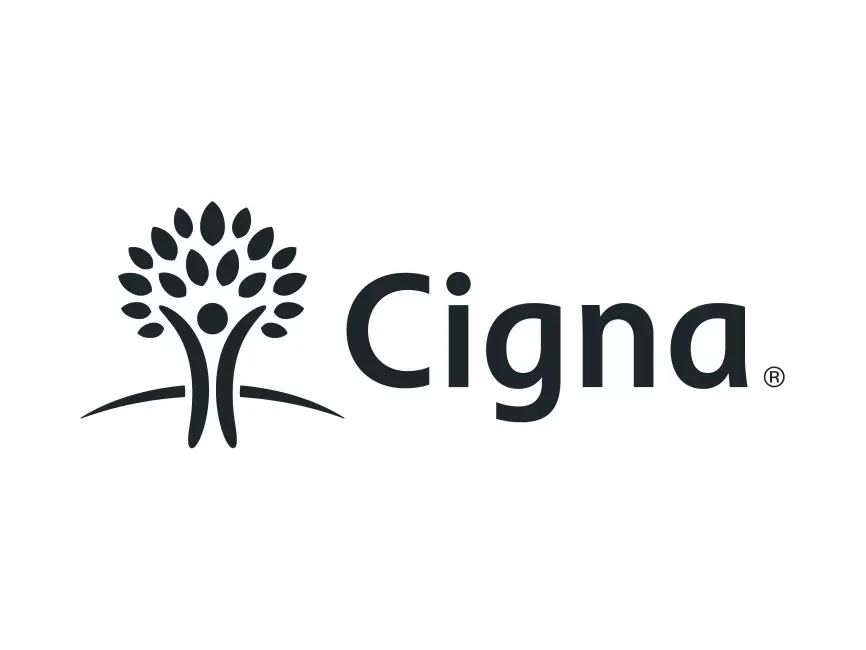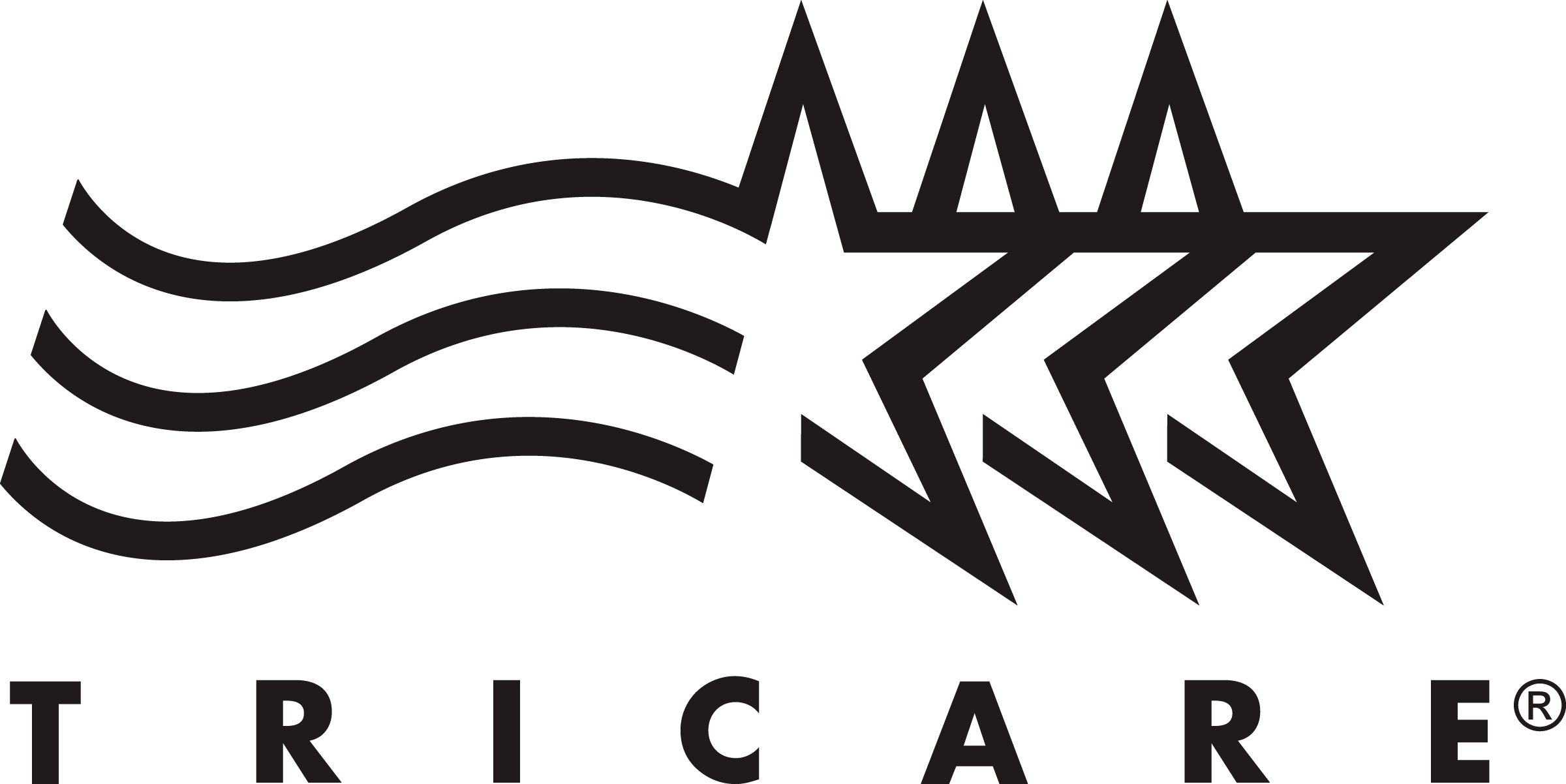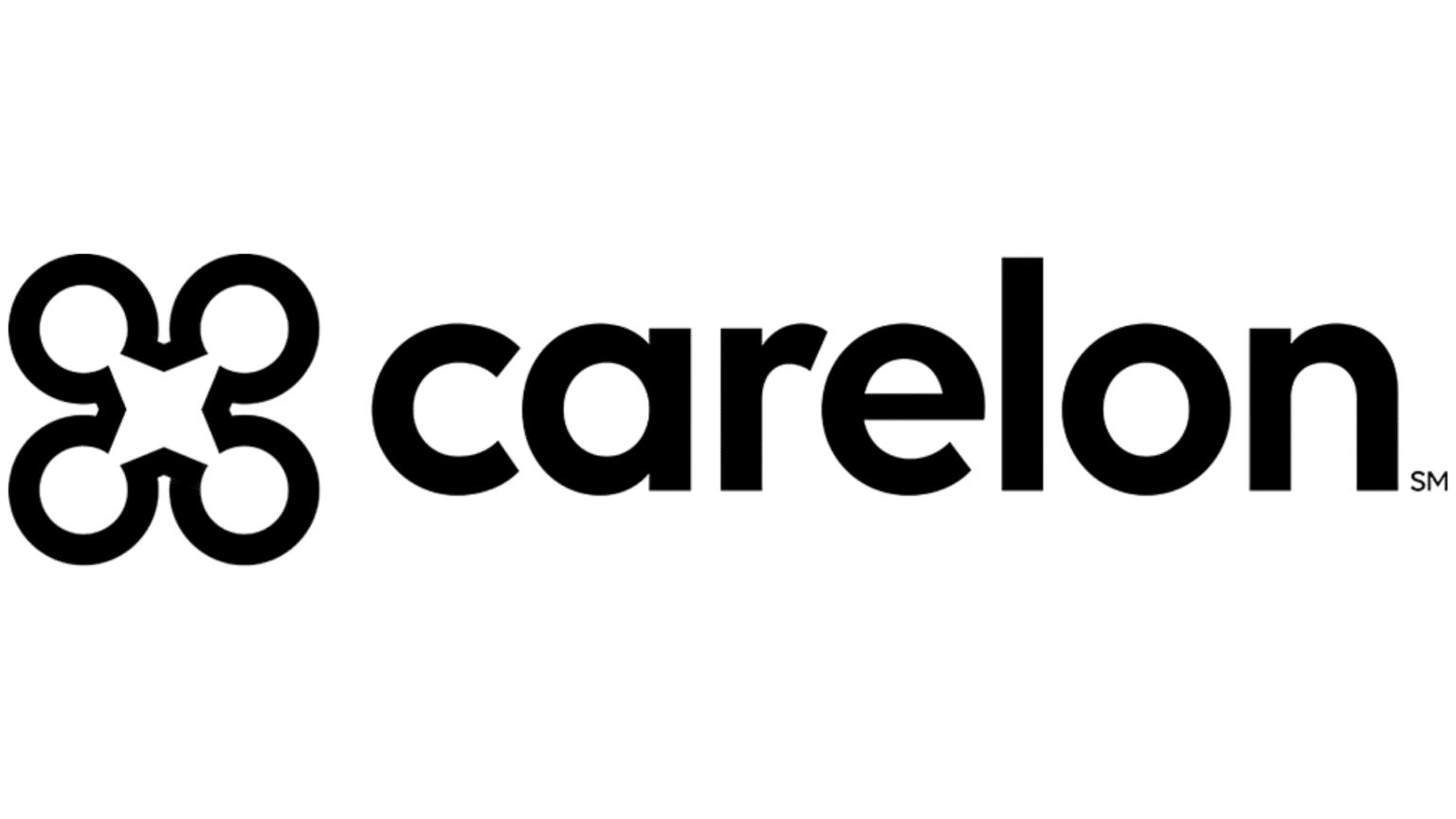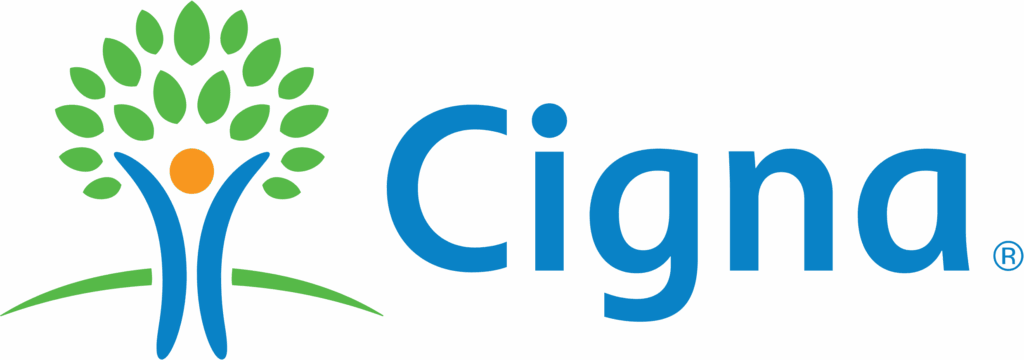Understanding Addiction
Before diving into the specific signs, it’s helpful to have a clear understanding of what addiction is. Addiction, or substance use disorder (SUD), is a complex disease of the brain and behavior. It is characterized by an inability to control the use of a substance, despite harmful consequences. It’s not a moral failing or a lack of willpower; it’s a chronic medical condition that changes brain circuits, including those involved in reward, motivation, and memory. These changes make it incredibly difficult for the individual to stop using the substance on their own.
Addiction can involve a wide range of substances. Some of the most common substances involved in addiction include:
– Alcohol: Easily accessible and socially acceptable, alcohol addiction (alcoholism) is widespread and can have devastating health and social consequences. Signs might include drinking more than intended, being unable to cut back, spending a lot of time drinking or recovering from drinking, and continuing to drink despite knowing it’s causing problems.
– Opioids: This category includes prescription painkillers like oxycodone, hydrocodone, fentanyl, as well as illicit drugs like heroin. Opioid addiction is highly physically addictive and withdrawal can be severe. Signs often include drowsiness, constricted pupils, nausea, constipation, financial problems, and seeking drugs from multiple doctors or illicit sources. Our
Drug Rehab Programs address opioid addiction with comprehensive care.
– Cannabis: While often perceived as less harmful, cannabis use can develop into a substance use disorder for some individuals, particularly with frequent and high-potency use. Signs might include using more than intended, unsuccessful attempts to cut down, spending a lot of time getting or using cannabis, and neglecting responsibilities in favor of use.
– Stimulants: Drugs like cocaine, crack cocaine, methamphetamine (meth), and prescription stimulants (e.g., Adderall, Ritalin) are highly addictive and can cause intense euphoria followed by a crash. Signs can include hyperactivity, paranoia, dilated pupils, weight loss, dental problems (meth mouth), and erratic behavior.
– Benzodiazepines: Prescription medications like Xanax, Ativan, and Klonopin are used to treat anxiety and sleep disorders but can be highly addictive when misused. Signs include drowsiness, confusion, impaired coordination, and dependence on the drug to feel “normal.” Withdrawal can be dangerous.
– Sedatives, Hypnotics, or Anxiolytics: This category includes a variety of drugs that induce sleep or reduce anxiety, similar to benzodiazepines, but may also include barbiturates and other prescription drugs that can lead to dependence and addiction. Signs often mirror those of benzo addiction.
– Other Substances: Addiction can also involve inhalants, hallucinogens (like LSD, mushrooms), dissociative drugs (like ketamine, PCP), and even non-substance behaviors like gambling, shopping, or internet use, though the focus here is primarily on substance use disorder.
Understanding the specific substance involved can sometimes help identify certain physical signs, but many behavioral and emotional signs are common across different types of addiction. It’s the compulsive use and the negative impact on life that defines the disorder, regardless of the specific substance. If you suspect your loved one is struggling with any substance, understanding that it is a treatable medical condition is the first step towards finding help.
Learn more about our Substance Abuse treatment options.
Behavioral Signs of Addiction
One of the most noticeable indicators that a family member might be struggling with addiction is a significant change in their behavior and personality. These changes can be subtle at first but often become more pronounced over time. Recognizing these behavioral signs of addiction is crucial because they directly impact relationships and daily functioning.
– Increased Secrecy and Withdrawal: A person struggling with addiction often becomes increasingly secretive about their activities, whereabouts, and finances. They might lie about who they are with or what they are doing. They may become defensive or irritable when asked direct questions. This secrecy often leads to withdrawal from family activities, hobbies they once enjoyed, and spending less time with supportive loved ones who don’t use drugs or alcohol. They might isolate themselves in their room, avoid family gatherings, or disappear for periods without explanation.
– Changes in Routine and Habits: There might be noticeable shifts in their daily routine. This could include staying out late more often, sleeping at unusual hours, or neglecting personal hygiene. Their priorities shift dramatically, with obtaining and using the substance becoming the central focus of their life.
– Neglect of Responsibilities: Addiction makes it difficult to maintain responsibilities. This can manifest as declining performance at work or school, frequent absences, missed deadlines, or even losing a job or dropping out of school. At home, they might neglect chores, childcare responsibilities, or other duties they previously handled. Bills might go unpaid, or appointments are missed.
– Financial Problems: Substance use is expensive. Addiction often leads to unexplained financial problems. This could involve frequently asking for money, borrowing from multiple people, having overdue bills, or even theft (stealing money or valuables from family members, friends, or employers). They might be unable to account for where money is going.
– Legal Issues: As addiction progresses, involvement with the legal system can become a reality. This might include arrests for public intoxication, DUI/DWI, possession of illegal substances, theft, or other crimes committed to support their drug habit.
– Changing Friendships: A person with a substance use disorder often changes their social circle. They may drop old friends who don’t use drugs or alcohol and start spending time with new friends who do. These new relationships are often centered around substance use.
– Increased Risk-Taking Behavior: Addiction can impair judgment, leading individuals to engage in risky behaviors they wouldn’t normally consider. This could include driving under the influence, engaging in unsafe sexual practices, or participating in illegal activities.
– Obsession with the Substance: A significant behavioral sign is an apparent obsession with the substance. This means spending a great deal of time thinking about when and how they will use next, planning how to obtain the substance, using it, and recovering from its effects. Their conversations might revolve around the substance or related topics.
– Failed Attempts to Cut Down: They may express a desire to cut back or stop using but are unable to do so on their own. They might make promises to quit that they cannot keep.
Observing several of these behavioral signs together is a strong indicator that professional help is needed. These behaviors are not character flaws but symptoms of a disease that has taken hold. They require understanding, not judgment, to address effectively. If you are seeing these changes in a loved one, reaching out for professional guidance is a vital next step. Compassion Recovery Center offers services that can help address these complex behavioral patterns.
Get help now.
Physical Signs of Addiction
Beyond the changes in behavior, substance use disorders often leave noticeable physical marks on an individual. These physical signs of addiction can vary depending on the substance being used, the duration and frequency of use, and the individual’s overall health. Paying attention to these physical cues can provide important clues.
– Noticeable Changes in Appearance and Hygiene: A person struggling with addiction may neglect their personal appearance and hygiene. They might wear the same clothes for days, stop showering regularly, or show a general decline in their grooming habits. Their skin might appear pale, sallow, or develop sores or infections. They might lose interest in looking presentable.
– Weight Changes: Significant and unexplained weight loss is common with stimulant use (like meth or cocaine) due to suppressed appetite and hyperactivity. Conversely, weight gain can occur with alcohol or other substances that affect metabolism or lead to poor dietary choices.
– Eye Changes: The eyes can be windows into substance use. Red or bloodshot eyes are common with cannabis or alcohol use. Pinpoint pupils (miosis) can be a sign of opioid use, while dilated pupils (mydriasis) can indicate the use of stimulants like cocaine or methamphetamine, or withdrawal from depressants. Glassy or unfocused eyes can also be a sign of intoxication.
– Changes in Sleep Patterns: Addiction severely disrupts normal sleep cycles. This can manifest as insomnia, excessive sleeping (sometimes nodding off at inappropriate times), or staying up for days on end (common with stimulants).
– Signs of Intoxication or Withdrawal: These are often the most direct physical signs.
– Intoxication: Depending on the substance, signs can include slurred speech, impaired coordination and balance (stumbling, clumsiness), excessive talkativeness or silence, unusual excitement or lethargy, distinctive smells (alcohol on breath, chemical smells on clothes), or track marks from injection drug use (though users may try to hide these).
– Withdrawal: When an addicted person stops using a substance, they often experience withdrawal symptoms. These can range from uncomfortable to medically dangerous. Signs vary greatly by substance but can include shaking or tremors, nausea and vomiting, sweating, fever or chills, muscle aches, anxiety, irritability, restlessness, seizures, or hallucinations. The fear of experiencing withdrawal is a major barrier to quitting and a significant sign of physical dependence.
– Other Physical Symptoms: Other physical signs might include frequent nosebleeds (snorting drugs), chronic cough or respiratory issues (smoking substances), dental problems (meth mouth), skin infections or abscesses (injection drug use), unexplained injuries, or general poor health. They might complain of feeling sick frequently.
It’s important to note that some of these physical signs could also be indicative of other medical or psychological conditions. However, when seen in combination with behavioral and emotional changes, they strengthen the possibility of a substance use disorder. If you are observing these physical changes in your loved one, it is a strong signal that they may be struggling and in need of medical and therapeutic support. Compassion Recovery Center offers
Outpatient Detox services for certain substances, which can be a critical first step in addressing the physical dependence safely, sometimes even remotely depending on the substance and severity.
Emotional and Psychological Signs
Addiction significantly impacts a person’s emotional state and psychological well-being. These changes can be confusing and distressing for family members to witness, as the person they know seems to disappear, replaced by someone erratic, unstable, or withdrawn. Recognizing these emotional signs of addiction is vital for understanding the internal struggle your loved one is facing.
– Mood Swings and Irritability: One of the most common emotional signs is experiencing rapid and unpredictable mood swings. A person might be happy and outgoing one moment and then suddenly become irritable, angry, or withdrawn the next, often without a clear trigger. They might have a short fuse and react disproportionately to minor issues. This emotional volatility is often tied to the cycle of substance use – feeling good while using, becoming agitated during withdrawal or when seeking the substance, and experiencing emotional distress about their situation.
– Increased Anxiety or Paranoia: Substance use can exacerbate or induce anxiety. Some substances, like stimulants, can cause significant paranoia and suspiciousness. Even depressants, when used chronically, can lead to rebound anxiety during periods of non-use. Your loved one might seem constantly on edge, worried about things that seem irrational, or convinced that others are watching or talking about them.
– Depression and Lack of Motivation: A pervasive sense of sadness, hopelessness, and a loss of interest in activities they once enjoyed are strong indicators of depression, which is frequently co-occurring with substance use disorders. They might sleep excessively, lack energy, and show no motivation to engage in work, hobbies, or social interactions. This lack of motivation is often misconstrued as laziness, but it’s a symptom of the addiction’s impact on brain chemistry and the individual’s emotional state.
Mental Health Treatment is often a crucial part of recovery, especially for co-occurring depression or anxiety.
– Intense Cravings and Compulsive Behavior: Addiction is characterized by intense cravings for the substance. These cravings can feel overwhelming and lead to compulsive, uncontrollable drug-seeking behavior, even when the person desperately wants to stop. They might spend significant amounts of time and energy obtaining and using the substance, neglecting everything else. This compulsion is a key feature distinguishing addiction from casual use.
– Increased Stress or Difficulty Handling Stress: Substance use is often a coping mechanism, albeit a destructive one, for dealing with stress. People with addiction often have a reduced ability to cope with even minor stressors without turning to their substance of choice. You might notice them becoming easily overwhelmed or stressed by everyday situations.
– Feelings of Guilt or Shame: Despite the outward appearance of not caring, individuals struggling with addiction often experience deep feelings of guilt, shame, and low self-worth regarding their substance use and the consequences it’s having on their lives and relationships. These feelings can perpetuate the cycle, as they may use the substance to numb the pain of these emotions.
– Denial: A strong psychological sign is denial – the inability or unwillingness to acknowledge that a problem exists. They might minimize their substance use, rationalize their behavior, blame others for their problems, or become angry when confronted about their use. Denial is a powerful defense mechanism that protects them from facing the painful reality of their situation.
Observing these emotional and psychological shifts requires empathy. While their behavior might be frustrating or hurtful, understanding that these are symptoms of a disease can help frame your approach. If you are noticing these emotional struggles in your loved one, professional help is essential. Compassion Recovery Center specializes in
Dual Diagnosis Treatment, addressing both substance use disorders and co-occurring mental health conditions like depression and anxiety, which is critical for lasting recovery.
Social and Financial Indicators
Addiction doesn’t exist in a vacuum; it significantly impacts an individual’s interactions with the world around them, particularly their social life and financial stability. These social and financial indicators can be some of the most visible signs to family members.
– Sudden Changes in Social Circles: As mentioned earlier, a person with a substance use disorder often begins associating with new friends who use drugs or alcohol and distances themselves from old friends who do not support or participate in their substance use. You might notice that their new friends seem questionable, or that they are secretive about who they are spending time with. This shift indicates that their social life is now centered around substance use.
– Withdrawal from Positive Social Activities: They might stop participating in family gatherings, events with non-using friends, hobbies, sports, or community activities they once enjoyed. Their world shrinks, often revolving only around obtaining and using the substance and being with others who do the same.
– Increased Conflict in Relationships: Addiction is a source of constant conflict in relationships. Arguments with partners, family members, and friends become more frequent and intense, often stemming from the individual’s behavior, broken promises, dishonesty, or the consequences of their substance use. Trust is eroded, leading to strain and isolation.
– Unexplained Financial Problems or Debt: As discussed under behavioral signs, the financial burden of addiction can be immense. Beyond simply asking for money, you might notice signs like:
– Bills piling up unpaid.
– Frequent or unexplained withdrawals from bank accounts.
– Taking out loans with unfavorable terms.
– Selling personal possessions or family items.
– Money or valuables missing from the home.
– Receiving calls from creditors.
– Inability to hold down a job, leading to lack of income.
These financial issues often create significant stress and conflict within the family.
– Legal Issues Related to Substance Use: Financial strain and risky behaviors often lead to legal consequences. Indicators might include:
– Getting arrested for DUIs, possession, theft, or disorderly conduct.
– Needing money for bail or legal fees.
– Having court dates or probation requirements.
These legal problems can be a wake-up call, but they are also a clear sign of the severe consequences of uncontrolled substance use.
– Lack of Future Planning or Goals: A person caught in the cycle of addiction often loses the ability to think about or plan for the future. Their focus is entirely on the present moment and their next opportunity to use. Conversations about long-term goals, career aspirations, or even simple future plans might be met with indifference or avoidance.
– Borrowing or Stealing: A clear and painful social and financial indicator is when the individual begins borrowing money excessively with no intention or ability to repay it, or worse, resorts to stealing from friends, family, or employers to fund their habit. This shatters trust and severely damages relationships.
These social and financial indicators are often the most visible manifestations of the underlying disease. They highlight how addiction erodes not just the individual’s well-being but their ability to function within society and maintain healthy relationships and responsibilities. Recognizing these signs can be painful, but it underscores the urgency of seeking professional help. Compassion Recovery Center understands the chaos addiction brings to families and offers structured support through programs like the
Intensive Outpatient Program (IOP) and
Virtual IOP Program, which allow individuals to address their addiction while beginning to rebuild their lives and relationships.
Impact on Family Dynamics
Addiction is often called a “family disease” because it impacts every single person in the household. The presence of a substance use disorder in one family member creates a ripple effect, altering roles, communication patterns, and emotional well-being for everyone involved. Understanding this impact is crucial, not just for helping the addicted individual, but for the health and healing of the entire family unit.
– Strain on Family Relationships and Communication Breakdown: Addiction thrives on secrecy, dishonesty, and conflict. This leads to severe strain on relationships between spouses, parents and children, siblings, and extended family. Communication becomes difficult, often characterized by arguments, accusations, defensiveness, and a lack of open, honest dialogue. Family members may stop talking about important issues to avoid conflict, leading to isolation within the home. Trust is broken repeatedly, making connection nearly impossible.
– Enabling Behaviors: Well-intentioned family members often develop enabling behaviors in an attempt to “help” or protect their loved one, or simply to survive the chaos. Enabling involves actions that shield the person from the natural consequences of their substance use, inadvertently allowing the addiction to continue. Examples include:
– Making excuses for their behavior (missing work, failing responsibilities).
– Giving them money that is used for drugs or alcohol.
– Bailing them out of legal or financial trouble.
– Taking over their responsibilities (chores, bills, childcare).
– Denying or minimizing the problem.
– Cleaning up messes caused by their substance use.
While these actions come from a place of love or fear, they prevent the individual from hitting a “rock bottom” that might motivate them to seek help. Recognizing and changing enabling behaviors is a critical step for family healing.
– Codependency: Codependency often develops in families affected by addiction. This is a behavioral pattern characterized by an excessive emotional or psychological reliance on a partner, child, or family member who requires support due to an illness or addiction. Codependent individuals often prioritize the needs and feelings of the addicted person above their own, derive self-worth from “saving” or controlling the addict, and struggle with boundaries and assertiveness. This dynamic can be emotionally exhausting and unhealthy for everyone involved.
– Emotional Toll on Family Members: Living with active addiction is incredibly stressful and emotionally draining. Family members often experience a range of painful emotions, including:
– Anxiety and Worry: Constant fear about their loved one’s safety, health, and what might happen next.
– Shame and Embarrassment: Hiding the problem from friends and the community.
– Anger and Resentment: Feeling hurt by broken promises, lies, and the chaos caused by the addiction.
– Guilt: Wondering if they somehow caused the addiction or if they could have done something differently.
– Sadness and Grief: Grieving the loss of the person they once knew and the life they expected.
– Isolation: Feeling alone because it’s hard to talk about the problem with others.
This chronic stress can lead to physical health problems, depression, anxiety disorders, and burnout for family members.
– Shifting Family Roles: Children in addicted households may take on adult responsibilities (parentification), becoming caregivers for younger siblings or even their addicted parent. Spouses may take on the role of the primary breadwinner and sole responsible parent. These shifts disrupt healthy family structures and can have long-lasting effects.
Addiction is not just an individual’s battle; it’s a family crisis that requires a family solution. Healing for the family is just as important as the individual’s recovery. Compassion Recovery Center understands this deeply and offers support not only to the person seeking treatment but also provides resources and guidance for families. While direct family counseling might be limited in a strictly individual telehealth program, our compassionate team can provide information and referrals for family support groups and resources to help you begin your own healing journey. Understanding the impact is the first step towards breaking the cycle and seeking help for the entire family unit.
How to Approach a Family Member
Once you’ve recognized the signs and understand the impact addiction is having, the difficult question becomes: How do I talk to my family member about my concerns? Approaching a loved one about suspected addiction is incredibly challenging and requires careful thought and preparation. It’s crucial to approach the conversation with compassion, firmness, and a focus on seeking help, rather than judgment or blame.
– Choose the Right Time and Place: Pick a time when you are both sober, calm, and free from distractions. A private setting where you won in’t be interrupted is best. Avoid having this conversation when they are intoxicated or going through severe withdrawal, as they are less likely to be receptive.
– Express Your Concerns Using “I” Statements: Frame your concerns around your observations and feelings, rather than making accusations. Instead of saying, “You’re an addict and you’re ruining your life,” try something like, “I have noticed you’ve been withdrawing from family activities lately, and I’m worried about you,” or “I’ve seen changes in your health, and I’m concerned about your well-being.” Focus on specific behaviors you’ve observed (the signs you’ve identified) and explain how they have made you feel. This approach makes the conversation less confrontational and more about your love and concern.
– Be Prepared for Denial or Anger: It’s very likely your loved one will deny the problem, minimize their substance use, get angry, or try to turn the conversation back on you. This is a common reaction stemming from shame and the nature of addiction. Try to remain calm and centered. Reiterate your love and concern, but stand firm in your observations and the need for help. Avoid getting drawn into arguments or debates.
– Educate Yourself: Before the conversation, educate yourself about addiction as a disease and the available treatment options. This will help you speak knowledgeably and counter potential arguments or misconceptions they may have about treatment.
– Have a Plan and Resources Ready: Don’t just express concern; come prepared with potential solutions. Research treatment centers and programs beforehand. Having specific options, like information about Compassion Recovery Center’s
Virtual IOP Program or other telehealth services accessible in Orange County, shows you’ve put thought into finding help. Be ready to suggest next steps, such as scheduling a consultation or assessment. You can even have our
Contact Us page open and be ready to call together.
– Set Boundaries (If Necessary): It’s important to communicate boundaries moving forward. This might involve stating that you will no longer provide financial support that enables their use, allow substance use in your home, or make excuses for their behavior. Setting boundaries is crucial for your own well-being and can sometimes serve as motivation for the individual to seek help.
– Consider an Intervention: In some cases, a structured intervention facilitated by a professional interventionist can be effective. An intervention involves a planned meeting where family members and close friends express their concerns and present the individual with a clear treatment plan and consequences if they refuse help. A professional can guide this process safely and effectively.
– Seek Support for Yourself: This conversation, and the entire process, is emotionally taxing. Make sure you have your own support system, whether it’s a therapist, support group (like Al-Anon or Nar-Anon), or trusted friends. Your well-being matters.
Approaching a loved one about addiction is perhaps one of the hardest things you will ever do, but it is a necessary step. It opens the door for them to receive the help they desperately need. Remember, you are not forcing them into treatment, but you are opening the possibility and providing the pathway. Compassion Recovery Center is here to support families through this difficult process. Our admissions team can guide you on initial steps and explain how our flexible remote programs can work.
Reach out today to talk about your options.
Treatment Options
Identifying the signs and having the difficult conversation are critical first steps, but they lead to the even more crucial stage: seeking professional treatment. Addiction is a complex disease that typically requires professional intervention to achieve lasting recovery. There are various treatment options available, and the best approach often depends on the severity of the addiction, the substance(s) used, co-occurring mental health conditions, and the individual’s personal circumstances and preferences.
Understanding the landscape of addiction treatment can help you guide your loved one towards appropriate care. Common elements and types of treatment include:
– Detoxification (Detox): This is often the first step, medically supervised withdrawal from the substance. Detox manages the physical symptoms of withdrawal and helps clear the substance from the body safely. Detox alone is not a cure for addiction but prepares the individual for further treatment. Compassion Recovery Center offers
Outpatient Detox services for suitable candidates, allowing individuals to withdraw safely under medical supervision while remaining in the comfort and privacy of their own home, which can be particularly beneficial with telehealth.
– Inpatient or Residential Treatment: This involves living at a treatment facility 24/7 for a period (typically 30-90 days, sometimes longer). It provides a structured, supportive environment away from triggers and temptations, with intensive therapy and medical care. This is often recommended for severe addictions or those with complex co-occurring issues. While Compassion Recovery Center specializes in remote care, understanding inpatient options is part of knowing the full spectrum of treatment.
– Outpatient Treatment: This allows the individual to live at home while attending therapy sessions and group meetings at a treatment center on a regular schedule. It offers more flexibility than inpatient care and is suitable for individuals with less severe addictions, strong support systems at home, or those transitioning from inpatient care.
– Intensive Outpatient Program (IOP): This is a structured form of outpatient treatment requiring a significant time commitment, typically several hours per day, multiple days per week. It offers a level of intensity similar to partial hospitalization but allows the individual to return home each day. Compassion Recovery Center offers a robust
Intensive Outpatient Program (IOP), and crucially, they offer a
Virtual IOP Program.
– Partial Hospitalization Program (PHP): Sometimes called “day treatment,” PHP is more intensive than IOP, typically requiring attendance 5-7 days a week for several hours each day. It provides medical supervision and intensive therapy, often serving as a step-down from inpatient care or a primary treatment option for individuals who need high-level support but don’t require 24/7 residential care. Compassion Recovery Center offers
Partial Hospitalization Program (PHP) services delivered via telehealth, providing high-intensity care with the flexibility of being at home.
– Therapy and Counseling: Individual and group therapy are central components of addiction treatment.
– Cognitive Behavioral Therapy (CBT): A widely used therapy that helps individuals identify and change negative thought patterns and behaviors that contribute to substance use.
Online CBT therapy is a key offering in remote addiction treatment.
– Dialectical Behavior Therapy (DBT): Helps individuals manage intense emotions, cope with stress, and improve relationships. Often used for those with co-occurring personality disorders.
– Motivational Interviewing: A counseling approach that helps individuals resolve their ambivalence about changing their behavior.
– Contingency Management: Uses positive reinforcement (rewards) to encourage abstinence.
– Medication-Assisted Treatment (MAT): For certain substance use disorders, particularly opioid and alcohol addiction, medications can be highly effective when combined with counseling and behavioral therapies. MAT helps manage withdrawal symptoms and cravings, reducing the risk of relapse.
MAT treatment online is available through telehealth for eligible individuals, making this vital treatment more accessible.
– Support Groups: Twelve-step programs like Alcoholics Anonymous (AA) and Narcotics Anonymous (NA), as well as non-12-step alternatives like SMART Recovery, provide peer support and a framework for long-term recovery.
– Dual Diagnosis Treatment: Many individuals with substance use disorders also have co-occurring mental health conditions like depression, anxiety, bipolar disorder, or trauma. Effective treatment must address both issues simultaneously. Compassion Recovery Center specializes in
Dual Diagnosis Treatment, providing integrated care for mental health and substance abuse issues concurrently.
Benefits of Remote and Telehealth Services
For many individuals and families, traditional in-person treatment presents significant barriers – taking time off work or school, arranging childcare, transportation issues, the cost of residential care, or simply the discomfort of being away from home. This is where remote and telehealth addiction treatment shines, offering flexible, accessible, and effective solutions. Compassion Recovery Center is a leader in providing these services, particularly for those in Orange County, California, and beyond.
The benefits of virtual rehab and telehealth include:
– Accessibility: Treatment is available from anywhere with a stable internet connection, removing geographical barriers. This is perfect for Orange County residents who might face long commutes to traditional centers.
– Flexibility: Allows individuals to maintain their daily responsibilities, such as work, school, or family care, while receiving intensive treatment. Programs like
Virtual IOP Program and
Virtual PHP Program are designed for this flexibility.
– Privacy and Comfort: Receiving therapy and participating in groups from the familiar and safe environment of home can reduce anxiety and increase comfort for some individuals.
– Cost-Effectiveness: Telehealth services are often more affordable than residential treatment, and many insurance plans cover remote addiction treatment. You can
verify your insurance online quickly to understand your coverage.
– Maintaining Support Systems: Being able to live at home allows individuals to stay connected with their supportive family members (while also learning healthy boundaries).
– Learning Real-World Coping Skills: Learning coping mechanisms and applying them immediately in your everyday environment can strengthen recovery skills.
– Continuity of Care: Telehealth makes it easier to maintain consistent therapy appointments and support group participation, which is crucial for long-term recovery.
Specific Services Offered by Compassion Recovery Center
Compassion Recovery Center is dedicated to providing high-quality, compassionate care through a remote model, making comprehensive treatment accessible. Our services include:
–
Virtual Partial Hospitalization Program (PHP): Our most intensive remote program, providing structured therapy and support for several hours a day, multiple days a week, from the comfort of your home.
–
Virtual Intensive Outpatient Program (IOP): A flexible yet intensive program offering therapy and group sessions, allowing individuals to manage work, school, or family commitments. This is a core offering for
remote drug rehab Orange County and
alcohol rehab programs delivered online.
–
Outpatient Detox: Medically supervised detox services available remotely for appropriate candidates, ensuring a safe and comfortable withdrawal process.
–
Mental Health Treatment and
Dual Diagnosis Treatment: Integrated therapy and support for individuals with co-occurring mental health conditions.
– Individual Therapy: Personalized counseling sessions with licensed therapists, often utilizing evidence-based approaches like
Online CBT therapy.
– Group Therapy: Connecting with peers in a supportive virtual environment.
– Family Support: Guidance and resources for family members navigating the challenges of addiction and recovery.
–
MAT treatment online: Prescription and management of addiction medications via telehealth when clinically appropriate.
If you have recognized signs of addiction in a loved one and are looking for a flexible, effective treatment solution, especially if you are in the Orange County area, our remote programs could be the answer. Don’t wait to get help.
Explore treatment options or
get help for substance abuse by contacting Compassion Recovery Center today. We are ready to provide a confidential assessment and discuss how our virtual rehab programs can support your loved one’s recovery journey.
Supporting a Loved One in Recovery
Getting a loved one into treatment is a monumental step, but it’s just the beginning of a lifelong journey of recovery. Supporting a family member during and after treatment is crucial for their long-term success, but it also requires careful attention to your own well-being and boundaries.
– Educate Yourself About Recovery: Learn about the recovery process, its challenges, and its rewards. Understanding that recovery is not linear and that relapses can happen (and are not failures, but setbacks from which to learn) can help you respond with compassion rather than disappointment.
– Encourage Continued Engagement in Treatment and Aftercare: Treatment programs, especially intensive ones like
Virtual IOP or PHP, provide essential tools and coping skills. However, ongoing therapy, support groups (like AA/NA), and alumni programs are vital for long-term recovery. Encourage your loved one to stick with their aftercare plan, attend virtual or in-person meetings, and continue individual therapy.
– Create a Supportive Home Environment: If your loved one is living at home during or after treatment (which is the case with remote programs like ours), create an environment that supports sobriety. This might involve removing substances from the home, avoiding places or situations associated with their past use, and maintaining a calm and stable living space.
– Practice Healthy Communication: Recovery is a time to rebuild trust and communication. Practice open, honest communication. Listen actively without judgment. Express your feelings respectfully. Rebuilding trust takes time and consistent effort from both sides.
– Set and Maintain Healthy Boundaries: This is perhaps one of the most important aspects of supporting recovery, both for the individual and the family. Boundaries protect your well-being and prevent a return to enabling or codependent patterns. Examples include:
– Clearly stating that you will not tolerate substance use in your home.
– Not providing financial assistance that could fund substance use.
– Saying “no” to requests that are unreasonable or compromise your well-being.
– Giving your loved one responsibility for their own actions and recovery, rather than managing it for them.
– Having a plan in place for what will happen if a relapse occurs.
Setting boundaries is not about being punitive; it’s about creating a healthy environment for everyone involved and holding your loved one accountable for their recovery.
– Support Their New, Healthy Lifestyle: Encourage and participate in healthy activities that replace substance use – hobbies, exercise, spending time in nature, pursuing education or career goals. Help them build a fulfilling life in recovery.
– Prioritize Your Own Self-Care: Supporting a loved one in recovery is demanding. It is absolutely essential for you to take care of your own physical and emotional health. This means continuing to attend your own support groups (like Al-Anon), seeing a therapist if needed, maintaining your own hobbies and friendships, getting enough sleep, and managing your stress. You cannot pour from an empty cup. Your own health and stability are foundational to being able to support your loved one effectively.
– Be Patient and Compassionate: Recovery is a journey with ups and downs. There will be challenges. Approach setbacks with patience and compassion, offering support for them to get back on track rather than resorting to blame. Celebrate the successes, no matter how small.
– Consider Family Counseling or Support Groups: Healing for the family unit often requires its own dedicated support. Family counseling or attending support groups specifically for families of addicts can provide invaluable tools for improving communication, setting boundaries, and healing from the trauma of active addiction. While Compassion Recovery Center primarily offers individual treatment, our team can help connect you with family resources in the Orange County area and virtually.
Supporting a loved one through recovery is a marathon, not a sprint. It requires commitment, patience, and a focus on health for the entire family. By setting boundaries, practicing self-care, and encouraging their continued engagement in recovery, you can be a positive force in their journey towards lasting sobriety. If you or your family need guidance on supporting a loved one in recovery, or to learn more about treatment options like our
Virtual IOP Program that supports integration back into daily life,
contact us for a confidential assessment.
Conclusion
Recognizing the signs that a family member might be struggling with addiction is the vital first step on a long and challenging, but ultimately hopeful, path towards recovery. We have explored the various signs, from the clear behavioral shifts like increased secrecy and neglect of responsibilities, to the physical indicators like changes in appearance and signs of withdrawal, the emotional turmoil marked by mood swings and depression, and the devastating social and financial consequences.
Understanding these signs, acknowledging the profound impact addiction has on the entire family system, and learning how to approach your loved one with compassion and a plan are essential steps you can take. Addiction is a treatable disease, and recovery is possible.
The journey to recovery involves professional help, and today, flexible and accessible options like telehealth addiction treatment are available. Compassion Recovery Center specializes in providing virtual rehab services, including
Virtual IOP and
Virtual PHP, offering high-quality care that fits into real-world life, particularly benefiting individuals and families in Orange County and across California. Our programs address not just the substance use but also co-occurring mental health issues through
Dual Diagnosis Treatment and therapies like
Online CBT therapy, supported by services like
MAT treatment online and outpatient detox when appropriate.
Supporting a loved one through recovery requires patience, understanding, healthy boundaries, and taking care of yourself. You are not alone in this struggle. Millions of families have navigated this path and found healing.
If you recognize these signs in a family member, or even if you just have a suspicion and don’t know where to start, please don’t wait. The sooner professional help is sought, the better the chances for a positive outcome. Compassion Recovery Center is here to provide the expert care and support needed for both the individual seeking recovery and their family. You can learn more about our
Admissions Information or
check insurance coverage online. Taking that first step is the bravest thing you can do.
Start your recovery journey today by reaching out to our compassionate team for a confidential assessment. Help is available, and hope is real.
What are the common signs that someone is struggling with addiction?
Common signs include changes in behavior (secrecy, neglecting responsibilities, changes in friends), physical changes (appearance, weight, eyes, withdrawal symptoms), emotional shifts (mood swings, irritability, depression), and social/financial issues (unexplained money problems, legal issues).
How can I tell if my family member is using drugs?
Look for behavioral changes like secrecy, changes in routine or friends, and neglecting obligations. Physical signs can include changes in appearance, dilated or constricted pupils, weight changes, or signs of intoxication or withdrawal. Unexplained financial problems or legal issues can also be indicators. Observing a combination of these signs is often suggestive of substance use.
What should I do if I suspect my loved one has an addiction?
Educate yourself about addiction, choose a calm moment to express your concerns using “I” statements focused on observed behaviors, and be prepared for potential denial. Research treatment options like those offered by Compassion Recovery Center’s virtual programs. Have a plan ready and consider seeking guidance from an addiction professional or support group for yourself.
How does addiction affect family relationships?
Addiction severely strains family relationships, leading to communication breakdowns, broken trust, increased conflict, and emotional distance. Family members may develop enabling or codependent behaviors, and the constant stress and worry can take a significant emotional and physical toll on everyone involved.
What treatment options are available for addiction?
Treatment options include detoxification, inpatient/residential programs, outpatient programs (IOP, PHP), therapy (CBT, DBT), Medication-Assisted Treatment (MAT), support groups, and Dual Diagnosis treatment for co-occurring mental health issues. Flexible options like telehealth addiction treatment are increasingly available, such as Compassion Recovery Center’s
Virtual IOP Program.
How can I support a family member in recovery?
Support includes encouraging continued treatment and aftercare, creating a supportive home environment, practicing healthy communication, setting and maintaining healthy boundaries, supporting their new lifestyle, being patient, and prioritizing your own self-care and support (e.g., Al-Anon).
What are the benefits of telehealth addiction treatment?
Telehealth offers accessibility from anywhere, flexibility to maintain daily responsibilities, privacy and comfort of home, potential cost-effectiveness, ability to stay connected with family support systems, practice of real-world coping skills, and improved continuity of care, making it a practical option for many, including those in Orange County.




